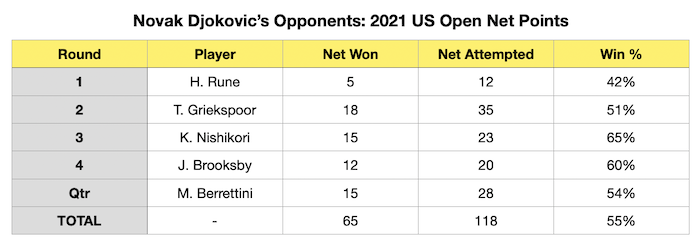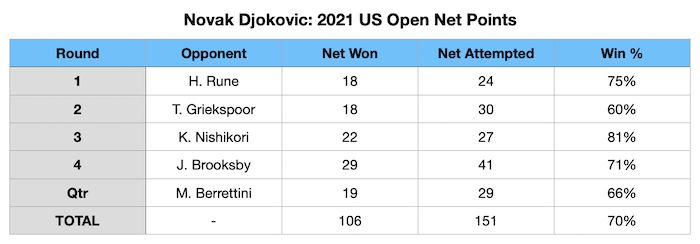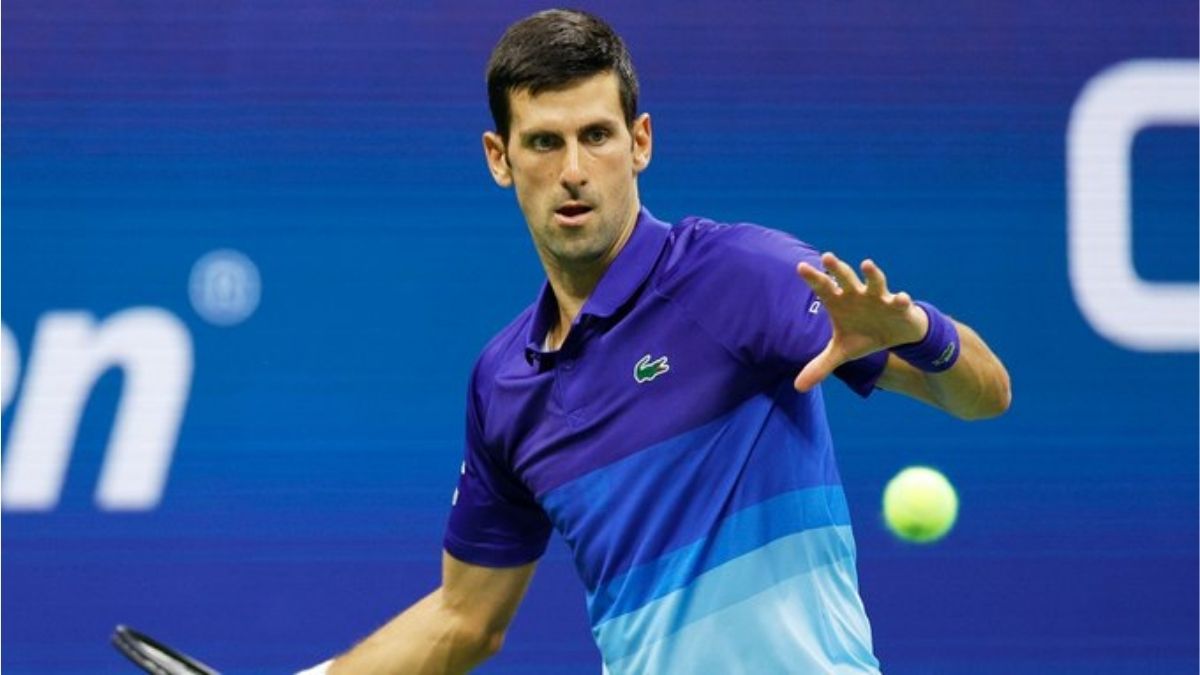Novak Djokovic Is A Short Ball Hunter
What are your chances of out-rallying, out-hustling, and out-thinking Novak Djokovic in a baseline rally?
It’s somewhere between slim and none.
You may be able to win some arbitrary points here and there, but nothing to form a game plan around. Nothing that allows you to create a pattern of play that you can consistently rely on to win points against the world No. 1. Think you are going to break down his backhand? That’s not happening. Maybe go toe-to-toe with Novak in a forehand duel? My money is on the Serb.
Novak is going to out-work you from the back of the court. He is going to have you on a string and jerk you from corner to corner like a rag doll. The lactic acid build-up is going to hit you hard. As Andy Roddick said a couple of days ago…
First he takes your legs ……. Then he takes your soul
— andyroddick (@andyroddick) September 7, 2021
Hey… here’s an idea! Maybe you go to the net to pressure Novak instead of digging a trench from deep behind the baseline. That idea has actually got some legs!
Novak has played five matches so far at the 2021 US Open. Here’s how his opponents have fared coming forward to finish points.

Novak’s five opponents to the semi-finals have come to the net just 118 times in 19 sets. That’s an average of 6.2 times per set. If you HATE the net, you are still going to average going to the six times a set to mop up some short balls, some shanked balls, and a couple of drop shots. In short, this is a disaster for these five players.
Now let’s have a look at Novak’s net numbers…

Novak has come to the net 151 times in 19 sets. That’s an average of 7.9 times per set.
Firstly, you simply cant’ let Novak swarm the net more than you. Simply. Can’t. Happen. Novak has been to the net 33 times more than his opponents. That’s great news for the Serb and tragic news for his opponents.
Secondly, even though his five opponents have not come in enough, they are still winning 55% of points, which is really, really good! I bet their combined baseline win percentage is somewhere between 40% to 45% won. There is simply no way that his opponents are enjoying a superior win percentage from the back of the court compared to the net.
These numbers look great for Novak. They are simply unacceptable from his opponents. Novak is loving coming to the net, and is winning a spectacular 70% of points when he does move forward to finish the point.
Novak plays Alexander Zverev at the US Open tonight. That’s going to be a very intriguing match. Sasha defeated Novak 1-6, 6-3, 6-1 at the Olympics recently. Here’s how they did in net and baseline points in Tokyo.
Net Points
- Sasha = won 72% (26/36)
- Novak = won 43% (9/21)
Sasha came to the net 36 times against Novak in three sets, which equals 12 per set. That’s a great goal for Novak’s opponents. Remember, so far at the 2021 US Open his opponents are only coming to the net HALF that total. Players that come to the net more do better there as well. Sasha won 72% while Novak won only 43%. The net was a major factor in deciding this match.
Here are their baseline points.
Baseline Points
- Sasha = won 49
- Novak = won 51
Both players were very equal with baseline performance in that match. They were certainly not equal at the net.
Keep your eye on who comes to the net more tonight to finish points. They will probably be shaking hands with a smile on their face at the end of the match.



